2024 Volvo XC40 Recharge Single Motor Review: Ideal Serving Size

Love It | Leave It |
|---|---|
Still great packaging | Pricey |
Efficiency and range fixed | Fiddly infotainment |
RWD is fun... | ...but AWD is such a good deal |
Maybe the 2024 Volvo XC40 Recharge was feeling homesick.
From the moment I picked up this all-electric SUV, the weather was as gray as its paint. This continued, right through the holiday period, until the day I handed it back.
This overcast pathetic fallacy wasn’t representative of my own mood, that’s for sure. With an unexpected switch to rear-wheel drive and an improved battery pack, Volvo’s smallest current EV rates high on the ol’ smile-ometer. My only concern? It’s about to be upstaged by a younger sibling.
What’s new?
For the first time this millennium, you can buy a brand new Volvo in North America and have it send its power solely to the rear axle. Like the related Polestar 2, the XC40 Recharge and C40 have ditched front-drive for their single-motor variants. The switch also brings in a larger capacity, CATL-sourced 82.0-kilowatt-hour battery pack. The on-paper benefits are two-fold: a big increase in range to 293 miles (472 kilometers), and a maximum fast-charging rate of 200 kW, so the standard 10-to-80 percent bump can happen in under 30 minutes. In theory, anyway.
For unknown reasons, the XC40 does not benefit from the Polestar’s more powerful rear motor. Still, it musters a wholly usable 248 horsepower—a single pony over the gas version—and 310 pound-feet of torque.
Despite the dramatic changes under the skin—what other car has gone from front- to rear-drive during the same generation?—there’s little way to know from the outside. The XC40 keeps the same charmingly chunky design as before, with a contrasting black roof and aero-optimized, 20-inch five-spoke wheels, here wrapped in winter rubber. It even has the filled-in grille and more angular headlights of its C40 sibling.
Pint-sized fun
It was a very deliberate choice to have a rear-drive EV over the two-week holiday period. I knew I’d be putting on serious mileage to visit various family members and that there would very likely be some snow squalls to contend with. Only half of that really panned out: it was an uncharacteristically mild Christmas season, with dangerous levels of pea-soup fog but precious little of the white stuff. Father Nature or Mother Christmas or whomever did bless the more northern spots with some snowy sprinklings however, and it gave the XC40 a chance to shine.
Ample (and instant torque) to the rear mixed with an almost square footprint turns the XC40 into some sort of alternate-universe rally car. It’s not quick like one, but the Volvo has plenty enough oomph for the day-to-day. It never feels squirrely or disobedient; the XC40 is instead eager, a little keener to tuck into a corner and maintain a neutral stance through it. There’s a surprising amount of body roll, but that’s the XC40’s way of clearly telegraphing where its limits lie. The light and accurate steering makes it a cinch to place on the road—keep the weighting on the (barely) heavier setting, however. As pretty as those alloys are, I do wish they were an inch or two smaller, as the ride over gritty roads is more nuggety than I’d prefer in something without a sporty badge.
Volvo earns points for its tastefully simple approach to regenerative braking: on or off, along with a creep setting, persists on every use cycle, not needing to be re-engaged every time you get in the car. That said, I’d still rather a physical on/off button.
It’s also super efficient. During our two weeks together the XC40 maintained a steady 2.89 miles per kWh (21.5 kWh/100 km). That kept it shy of its quoted range, but that was with plenty of highway miles and temperatures constantly hovering around freezing. Most EVs do worse.
Pleasant and spacious cabin
The XC40 cabin is the margherita pizza of the premium compact SUV scene: pleasantly simple, put together with mostly quality ingredients. The seats are typical Swedish items, low profile but high on comfort. The combo of faux-leather and suede feels good and should prove hearty long-term. The upright driving position gives a clear view out and to the sides; only the chunky C-pillar is a mark against visibility. The topographical trim pieces are a hit with family and friends: visually interesting, they provide just the right amount of indirect ambient lighting at night to avoid being distracting. Take notes, Mercedes.
I've said it before and I'll say it again: the central plastic section that houses the main array of physical controls looks very cheap. The rest of the cabin is otherwise well screwed together. The built-in garbage bin and clothes hooks remain clever bits for the urban adventurer. This tester skips the blingy crystal shifter, yet I enjoy the feel of the hollow one more.
The small openings for the second row can make ingress and egress tougher for taller folks, but once inside the XC40's high roof and 36.1 inches (917 millimeters) of legroom make it an easy space to spend time. Just don't expect to go three-wide: the transmission hump is sizeable, a reminder of the XC40's gas-based origins.
During the holidays, I briefly swapped into managing editor Mike Schlee's EQE SUV. Despite a much larger silhouette and a dedicated EV platform, it offered barely more storage space. The XC40 will happily swallow six carry-ons, and that's with the cargo cover.
Infuriating infotainment
Personal email aside, I am not really a part of the Google ecosystem. So the Android-based infotainment system that resides in modern Volvos is of no real added value for me. It’s a simple enough setup to use, though some features are located in unexpected sub-menus. While Apple CarPlay is here, it’s both wired and prone to hiccups. To Volvo’s credit, software updates have sped up the infotainment system’s response times, and the ability to view phone navigation in the driver display is a win.
Dollars and sense
Here’s where things get tough for the XC40 Recharge. You have to really want rear drive: the AWD upgrade is just $1,750 in America, and $2,500 CAD in Canada (or $3,550 CAD for the base trim). The Core is the lowest trim, starting at $53,745 ($62,570 CAD). The Plus adds niceties such as the pano roof, air purifier, 360-degree camera, adaptive front lighting, and a power passenger seat amongst other goodies, for an additional $2,950 in the US. This upgrade is a pricey $8,050 CAD in the land of the North, but adds a crucial heat pump. Moving up to the Ultimate ($60,095 / $74,870 CAD) includes a heat pump in both countries. It’s unfortunately the only way to unlock full-range adaptive cruise control as well, along with two-zone climate control, and HK sound system. The Ultimate brings the heat to the steering wheel, rear outboard seats, and windshield wiper nozzles.
As-equipped, our tester would run $60,095 ($75,570 CAD), including destination. That’s a lot of coin for a 250-horsepower sub-compact SUV, even one as likeable as this. There’s the Genesis GV60, which soundly beat the related C40 in a comparison a little over a year ago. It starts at just $53,350 ($72,500 CAD), packing more power and more tech, though with less range.
More of a challenge is the upcoming EX30. While casting a slightly smaller shadow, this from-the-ground-up EV boasts nearly as much interior space, a friendlier infotainment system, and barely less range (but more power). And Volvo will sell it for around $35,000 in the US and $53,000 in Canada.
Verdict: 2024 Volvo XC40 Recharge Single Motor Review
It may be on the verge of being booted out of the spotlight by its upstart kid brother, but the 2024 Volvo XC40 Recharge is a seriously likeable little EV. The availability of a rear-drive model marks the Swede out as an unlikely fun-to-drive hero in the fledgling small-EV segment, with a level of composure and comfort that is hard to find.
The AWD model is comparatively great value, but for me, it’s simply not as interesting. Unless you really need that added take-off grip, the single-motor variant is plenty enough to add some color to your world.
Become an AutoGuide insider. Get the latest from the automotive world first by subscribing to our newsletter here.

Kyle began his automotive obsession before he even started school, courtesy of a remote control Porsche and various LEGO sets. He later studied advertising and graphic design at Humber College, which led him to writing about cars (both real and digital). He is now a proud member of the Automobile Journalists Association of Canada (AJAC), where he was the Journalist of the Year runner-up for 2021.
More by Kyle Patrick



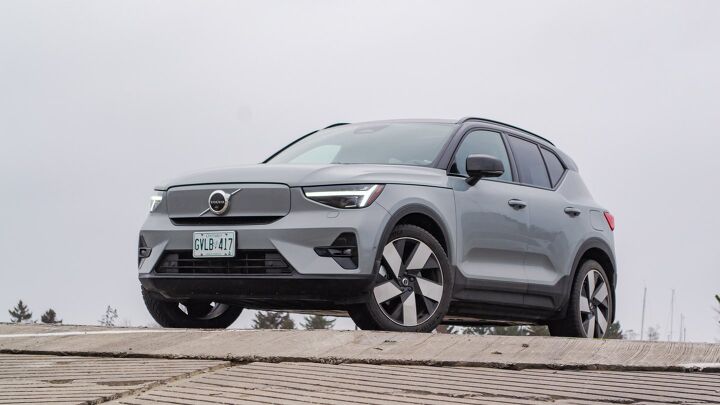
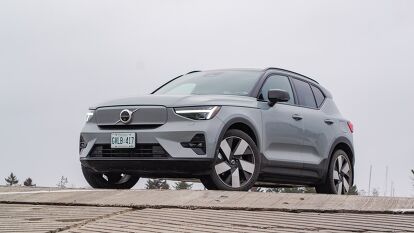




























































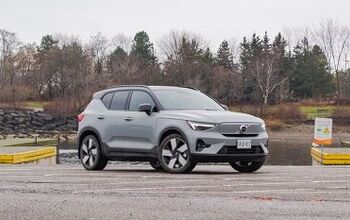

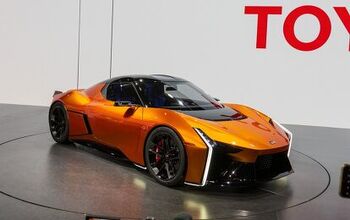



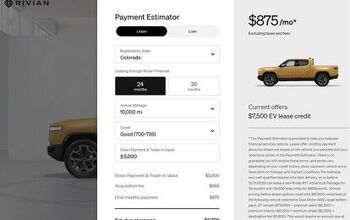
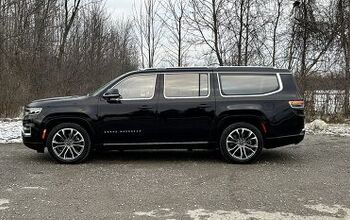

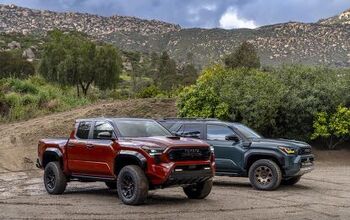
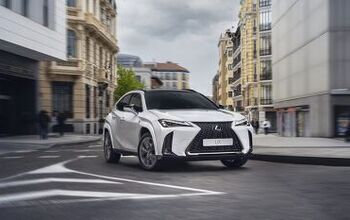




Comments
Join the conversation